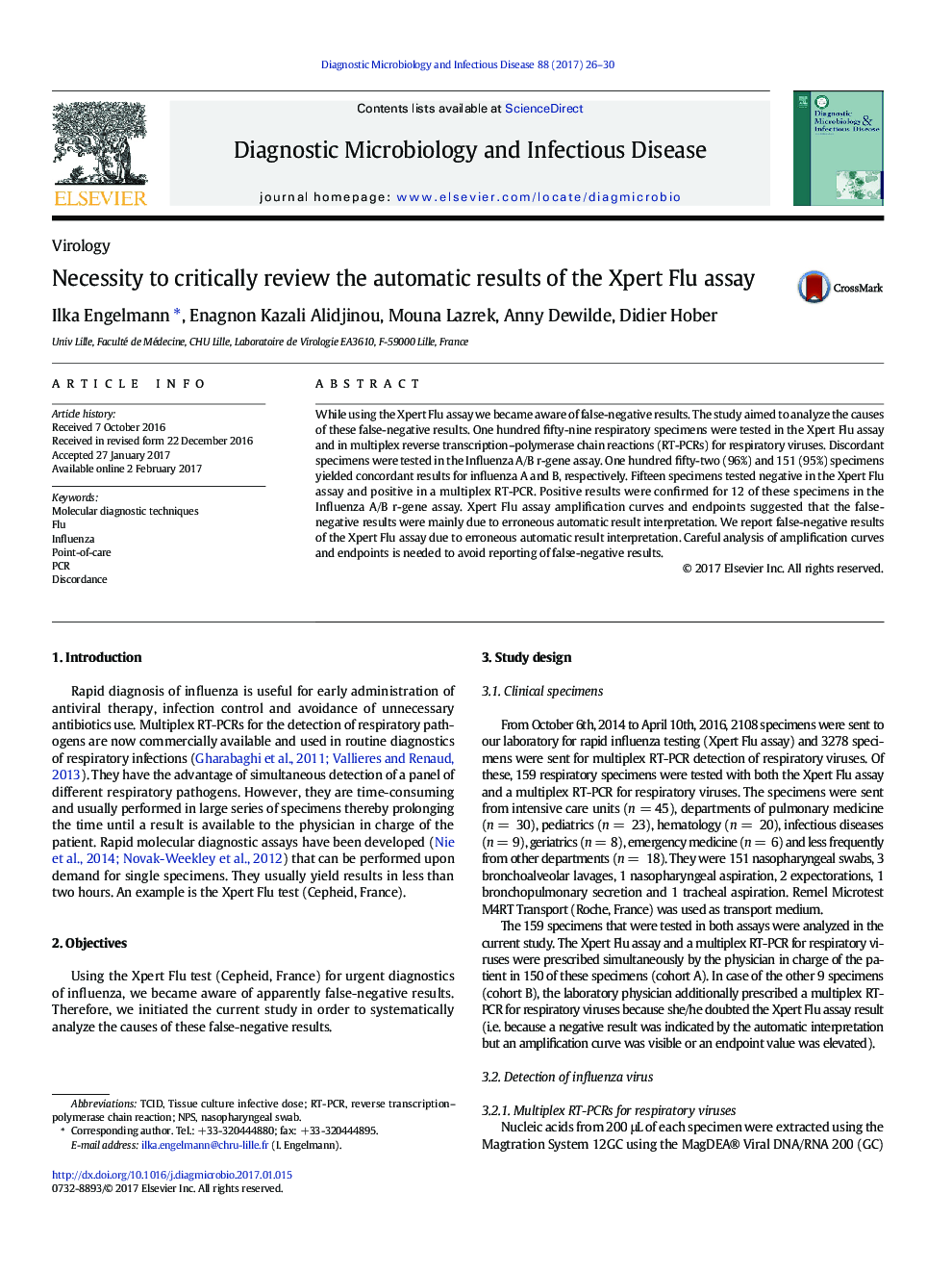| Article ID | Journal | Published Year | Pages | File Type |
|---|---|---|---|---|
| 5665931 | Diagnostic Microbiology and Infectious Disease | 2017 | 5 Pages |
â¢False-negative results of the Xpert Flu assay were identified.â¢False-negative results were mainly due to erroneous automatic result interpretation.â¢To avoid reporting false-negative results, critical review of assay data is needed.
While using the Xpert Flu assay we became aware of false-negative results. The study aimed to analyze the causes of these false-negative results. One hundred fifty-nine respiratory specimens were tested in the Xpert Flu assay and in multiplex reverse transcription-polymerase chain reactions (RT-PCRs) for respiratory viruses. Discordant specimens were tested in the Influenza A/B r-gene assay. One hundred fifty-two (96%) and 151 (95%) specimens yielded concordant results for influenza A and B, respectively. Fifteen specimens tested negative in the Xpert Flu assay and positive in a multiplex RT-PCR. Positive results were confirmed for 12 of these specimens in the Influenza A/B r-gene assay. Xpert Flu assay amplification curves and endpoints suggested that the false-negative results were mainly due to erroneous automatic result interpretation. We report false-negative results of the Xpert Flu assay due to erroneous automatic result interpretation. Careful analysis of amplification curves and endpoints is needed to avoid reporting of false-negative results.
